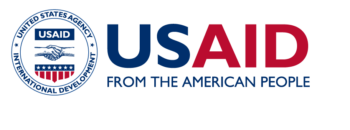Child Protection in Outbreaks: Prioritizing Child Participation in Infectious Disease Outbreaks
(Mini-Guide 6)
Author: The Alliance for Child Protection in Humanitarian Action, READY, Plan International
This Mini-Guide aims to support children’s agency and amplify their voices, ultimately improving the overall quality and effectiveness of subsequent interventions.
This Mini-Guide sets out:
- ‘WHAT’ child participation is;
- ‘WHY’ child participation is important in outbreak settings; and
- Strategies as to ‘HOW’ potential challenges may be overcome.
It also offers practical guidance to ensure that child participation is safe, meaningful and inclusive and that children are consulted at all stages of outbreak management (preparedness, response and recovery).
View and download the Child Protection in Outbreaks: Prioritising Child Participation in Infectious Disease Outbreaks (Mini-Guide 6) on the Alliance website:
- English: Mini Guide 6 | Child Protection in Outbreaks: Prioritising Child Participation in Infectious Disease Outbreaks
- Español: Miniguía #6 | Protección infantil en brotes de enfermedades: Priorizar la participación infantil en brotes de enfermedades infecciosas
- Français: Mini-guide #6 | Protection de l’enfance lors d’épidémies : donner la priorité à la participation des enfants aux épidémies de maladies infectieuses
- Arabic:
دليل صغير # 6 | حماية الطفل في حالات تفشي المرض: إعطاء الأولوية لمشاركة الأطفال في تفشي الأمراض المعدية
(Mini-Guide 6)


This website is made possible by the support of the American People through the United States Agency for International Development (USAID) under the READY initiative. READY (not an acronym) is supported by USAID’s Bureau for Democracy, Conflict, and Humanitarian Assistance, Office of U.S. Foreign Disaster Assistance (OFDA) and is led by Save the Children in partnership with the Johns Hopkins Center for Humanitarian Health, the Johns Hopkins Center for Communication Programs, UK-Med, EcoHealth Alliance, and Mercy Malaysia. The contents of this website are the sole responsibility of Save the Children. The information provided on this website does not necessarily reflect the views of USAID, any or all consortium partners, or the United States Government, and is not official U.S. Government information.


